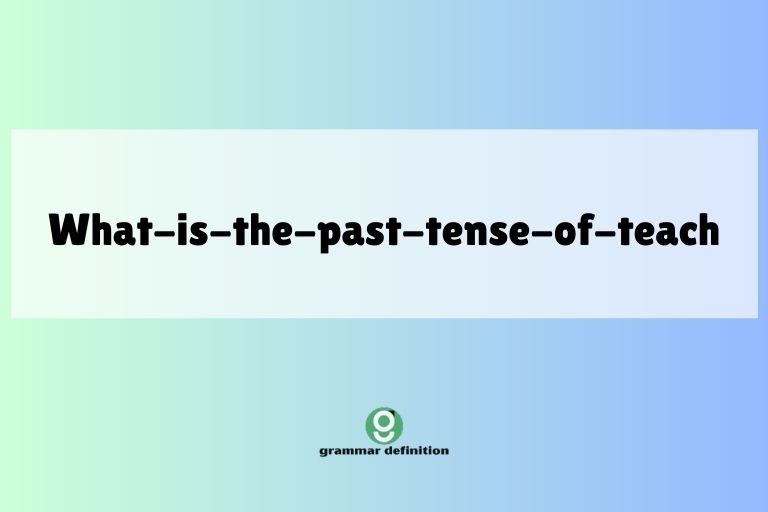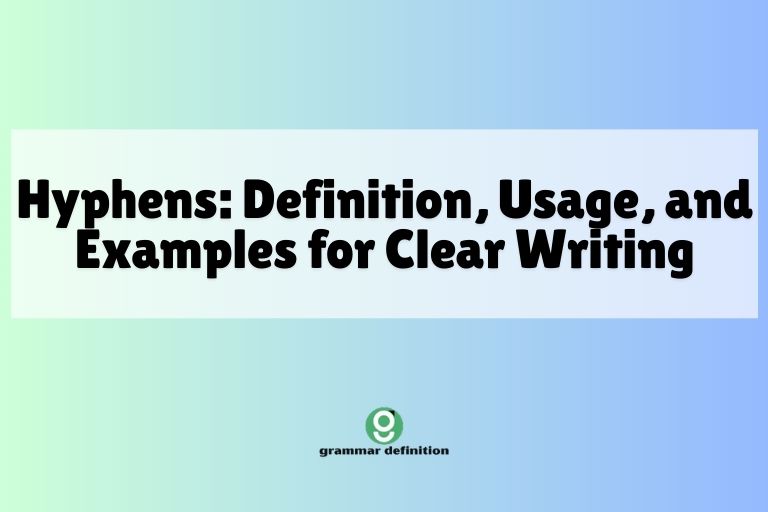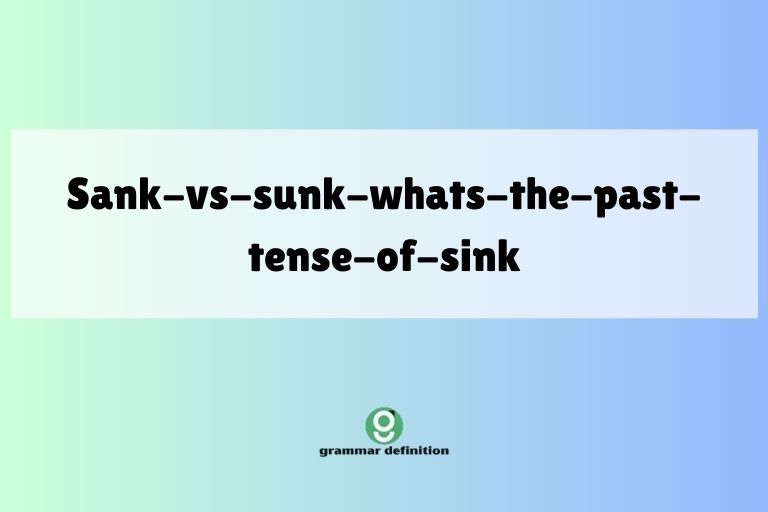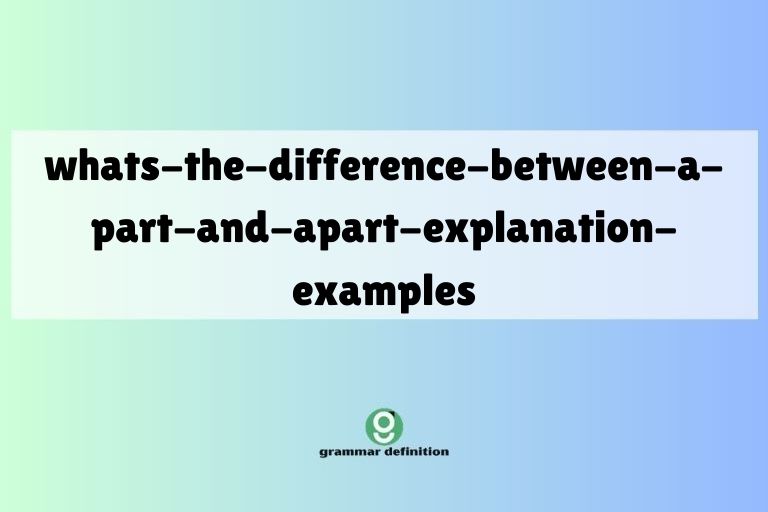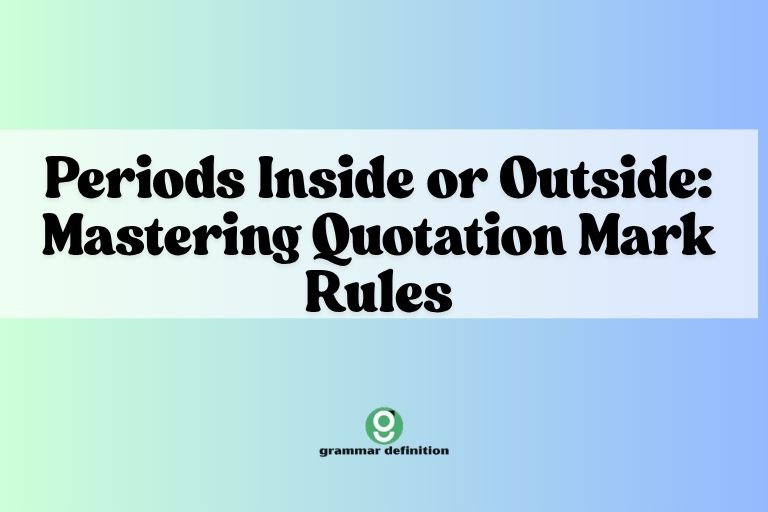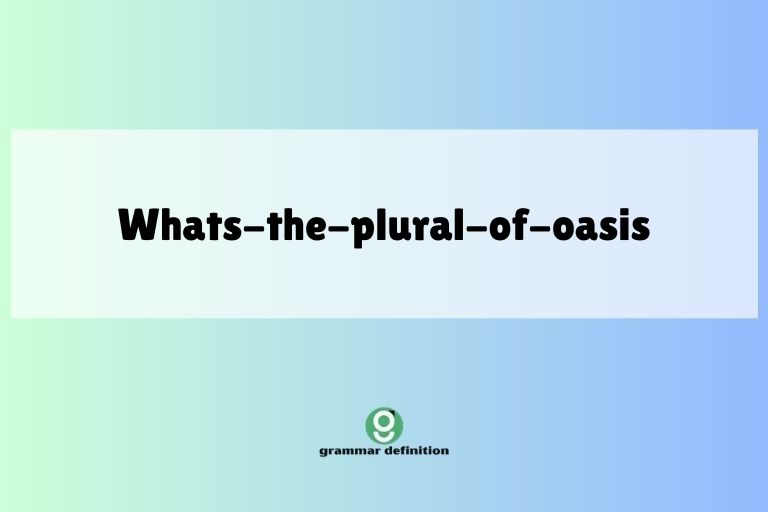Mastering Possessive Nouns: A Comprehensive Guide
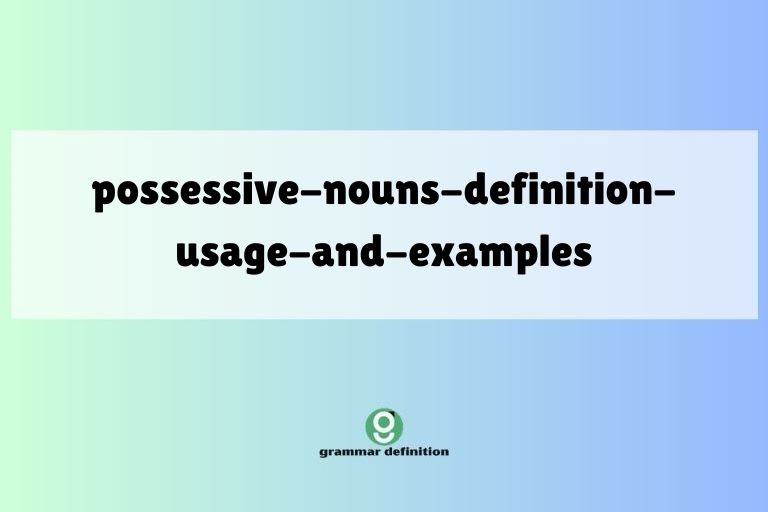
Understanding possessive nouns is crucial for expressing ownership and relationships in English. This guide provides a comprehensive overview of possessive nouns, covering their definition, formation, usage, and common mistakes.
Whether you are a beginner or an advanced learner, this article will help you master this essential grammar concept and improve your writing and speaking skills.
Table of Contents
- Introduction
- Definition of Possessive Nouns
- Structural Breakdown
- Types of Possessive Nouns
- Examples of Possessive Nouns
- Usage Rules for Possessive Nouns
- Common Mistakes with Possessive Nouns
- Practice Exercises
- Advanced Topics
- Frequently Asked Questions (FAQ)
- Conclusion
Definition of Possessive Nouns
A possessive noun is a noun that shows ownership or a relationship between one noun and another. It indicates that something belongs to someone or something.
Possessive nouns are typically formed by adding an apostrophe and the letter “s” (‘s) to the end of a singular noun or an apostrophe (‘) to the end of a plural noun that already ends in “s.” This grammatical structure is essential for clarifying who or what owns, controls, or is associated with something else within a sentence.
Possessive nouns function as adjectives because they modify other nouns. They answer the question “whose?” or “of whom?” For example, in the phrase “the dog’s bone,” the possessive noun “dog’s” modifies the noun “bone,” indicating that the bone belongs to the dog.
Understanding possessive nouns is crucial for constructing clear and grammatically correct sentences.
Structural Breakdown
The structure of a possessive noun involves the base noun and an apostrophe, sometimes followed by an “s.” Here’s a breakdown:
- Singular Noun: Add ‘s (e.g., cat’s, child’s)
- Plural Noun Ending in “s”: Add only an apostrophe (e.g., dogs’, students’)
- Plural Noun Not Ending in “s”: Add ‘s (e.g., children’s, men’s)
The apostrophe is the key element indicating possession. Its placement is crucial for conveying the correct meaning.
Incorrect placement can lead to ambiguity or grammatical errors.
Types of Possessive Nouns
Singular Possessive Nouns
Singular possessive nouns indicate that something belongs to one person, animal, place, or thing. They are formed by adding an apostrophe and “s” (‘s) to the end of the singular noun.
Examples include:
- The girl’s book (the book belonging to the girl)
- The car’s engine (the engine of the car)
- The company’s policy (the policy of the company)
Plural Possessive Nouns
Plural possessive nouns indicate that something belongs to more than one person, animal, place, or thing. If the plural noun ends in “s,” add only an apostrophe (‘).
Examples include:
- The students’ projects (the projects belonging to the students)
- The dogs’ toys (the toys of the dogs)
- The companies’ profits (the profits of the companies)
Irregular Plural Possessive Nouns
Irregular plural nouns do not end in “s.” To form the possessive, add an apostrophe and “s” (‘s).
Examples include:
- The children’s toys (the toys belonging to the children)
- The men’s restroom (the restroom for men)
- The women’s clothing (the clothing for women)
Compound Possessive Nouns
Compound nouns consist of two or more words joined together. To make a compound noun possessive, add the apostrophe and “s” (‘s) to the last word.
Examples include:
- My brother-in-law’s car (the car belonging to my brother-in-law)
- The vice-president’s office (the office of the vice-president)
- The attorney-general’s opinion (the opinion of the attorney-general)
Joint Possessive Nouns
Joint possession occurs when two or more nouns share ownership of something. In this case, add the apostrophe and “s” (‘s) to the last noun in the series.
Examples include:
- John and Mary’s house (the house belonging to both John and Mary)
- Tom and Jerry’s cartoon (the cartoon featuring both Tom and Jerry)
- Smith and Jones’ company (the company belonging to both Smith and Jones)
Separate Possessive Nouns
Separate possession occurs when two or more nouns each own something individually. In this case, each noun takes the apostrophe and “s” (‘s).
Examples include:
- John’s and Mary’s cars (John’s car and Mary’s car, two separate cars)
- Tom’s and Jerry’s toys (Tom’s toys and Jerry’s toys, two separate sets of toys)
- Smith’s and Jones’s companies (Smith’s company and Jones’s company, two separate companies)
Examples of Possessive Nouns
The following tables provide extensive examples of possessive nouns in various contexts.
Table 1: Singular Possessive Nouns
This table illustrates how to form singular possessive nouns by adding ‘s to the end of the noun. The examples show a wide range of nouns to help you understand the concept better.
| Singular Noun | Singular Possessive Noun | Example Sentence |
|---|---|---|
| Dog | Dog’s | The dog’s bone was buried in the yard. |
| Cat | Cat’s | The cat’s meow echoed through the house. |
| Child | Child’s | The child’s toy was broken. |
| Student | Student’s | The student’s essay was well-written. |
| Teacher | Teacher’s | The teacher’s desk was cluttered. |
| Company | Company’s | The company’s profits increased this year. |
| Country | Country’s | The country’s economy is improving. |
| City | City’s | The city’s skyline is impressive. |
| Car | Car’s | The car’s engine needs repair. |
| House | House’s | The house’s roof is leaking. |
| Book | Book’s | The book’s cover is torn. |
| Pen | Pen’s | The pen’s ink ran out. |
| Friend | Friend’s | My friend’s birthday is next week. |
| Boss | Boss’s | The boss’s decision was final. |
| Government | Government’s | The government’s policies are under review. |
| World | World’s | The world’s population is growing. |
| Planet | Planet’s | The planet’s atmosphere is changing. |
| Author | Author’s | The author’s latest book is a bestseller. |
| Artist | Artist’s | The artist’s painting is stunning. |
| Singer | Singer’s | The singer’s voice is mesmerizing. |
| Neighbor | Neighbor’s | My neighbor’s dog barks a lot. |
| Baker | Baker’s | The baker’s bread is always fresh. |
| Doctor | Doctor’s | The doctor’s advice was helpful. |
| Lawyer | Lawyer’s | The lawyer’s argument was convincing. |
| Engineer | Engineer’s | The engineer’s design was innovative. |
| President | President’s | The president’s speech was inspiring. |
| King | King’s | The king’s crown was heavy. |
| Queen | Queen’s | The queen’s jewels were priceless. |
| Hero | Hero’s | The hero’s courage saved the day. |
| Villain | Villain’s | The villain’s plan failed. |
Table 2: Plural Possessive Nouns (Ending in “s”)
This table demonstrates how to form plural possessive nouns when the plural form already ends in “s”. Simply add an apostrophe after the “s”.
| Plural Noun | Plural Possessive Noun | Example Sentence |
|---|---|---|
| Dogs | Dogs’ | The dogs’ bowls were empty. |
| Cats | Cats’ | The cats’ toys were scattered around the room. |
| Students | Students’ | The students’ grades improved this semester. |
| Teachers | Teachers’ | The teachers’ lounge is a quiet place. |
| Companies | Companies’ | The companies’ profits varied greatly. |
| Countries | Countries’ | The countries’ economies are interconnected. |
| Cities | Cities’ | The cities’ infrastructures need upgrades. |
| Cars | Cars’ | The cars’ headlights illuminated the road. |
| Houses | Houses’ | The houses’ roofs were covered in snow. |
| Books | Books’ | The books’ pages were yellowed with age. |
| Pens | Pens’ | The pens’ ink colors were vibrant. |
| Friends | Friends’ | My friends’ birthdays are all in the summer. |
| Bosses | Bosses’ | The bosses’ decisions affected many employees. |
| Governments | Governments’ | The governments’ policies were controversial. |
| Worlds | Worlds’ | The worlds’ ecosystems are fragile. |
| Planets | Planets’ | The planets’ orbits are elliptical. |
| Authors | Authors’ | The authors’ books were displayed prominently. |
| Artists | Artists’ | The artists’ paintings were diverse in style. |
| Singers | Singers’ | The singers’ voices harmonized beautifully. |
| Neighbors | Neighbors’ | The neighbors’ gardens were well-maintained. |
| Bakers | Bakers’ | The bakers’ ovens were always hot. |
| Doctors | Doctors’ | The doctors’ schedules were demanding. |
| Lawyers | Lawyers’ | The lawyers’ arguments were persuasive. |
| Engineers | Engineers’ | The engineers’ designs were innovative. |
| Presidents | Presidents’ | The presidents’ speeches were historic. |
| Kings | Kings’ | The kings’ crowns were symbols of power. |
| Queens | Queens’ | The queens’ jewels were legendary. |
| Heroes | Heroes’ | The heroes’ actions inspired many. |
| Villains | Villains’ | The villains’ plans always backfired. |
Table 3: Irregular Plural Possessive Nouns (Not Ending in “s”)
This table focuses on irregular plural nouns that do not end in “s”. In these cases, add ‘s to form the possessive.
| Irregular Plural Noun | Irregular Plural Possessive Noun | Example Sentence |
|---|---|---|
| Children | Children’s | The children’s toys were scattered around the room. |
| Men | Men’s | The men’s restroom is on the left. |
| Women | Women’s | The women’s clothing section is upstairs. |
| People | People’s | The people’s opinions matter. |
| Teeth | Teeth’s | The teeth’s enamel was damaged. |
| Feet | Feet’s | The feet’s footprints were in the sand. |
| Mice | Mice’s | The mice’s squeaks echoed in the walls. |
| Geese | Geese’s | The geese’s honking was loud. |
| Oxen | Oxen’s | The oxen’s strength was impressive. |
| Lice | Lice’s | The lice’s presence caused itching. |
| Alumni | Alumni’s | The alumni’s donations supported the university. |
| Criteria | Criteria’s | The criteria’s evaluation process was thorough. |
| Data | Data’s | The data’s analysis revealed interesting trends. |
| Media | Media’s | The media’s coverage was extensive. |
| Phenomena | Phenomena’s | The phenomena’s causes are still unknown. |
| Automata | Automata’s | The automata’s mechanisms were intricate. |
| Bacteria | Bacteria’s | The bacteria’s growth was rapid. |
| Curricula | Curricula’s | The curricula’s objectives were well-defined. |
| Errata | Errata’s | The errata’s corrections were necessary. |
| Genera | Genera’s | The genera’s characteristics varied widely. |
| Minutia | Minutia’s | The minutia’s details were carefully examined. |
| Stimuli | Stimuli’s | The stimuli’s effects were noticeable. |
| Addenda | Addenda’s | The addenda’s information was supplementary. |
| Aquaria | Aquaria’s | The aquaria’s displays were captivating. |
| Candelabra | Candelabra’s | The candelabra’s lights flickered gently. |
| Reindeer | Reindeer’s | The reindeer’s antlers were impressive. |
| Swine | Swine’s | The swine’s pen was muddy. |
| Quadruped | Quadruped’s | The quadruped’s tracks were visible in the snow. |
| Fish | Fish’s | The fish’s scales shimmered. |
Table 4: Compound Possessive Nouns
This table illustrates how to make compound nouns possessive by adding the apostrophe and “s” to the last word of the compound noun.
| Compound Noun | Compound Possessive Noun | Example Sentence |
|---|---|---|
| Brother-in-law | Brother-in-law’s | My brother-in-law’s car is new. |
| Sister-in-law | Sister-in-law’s | My sister-in-law’s advice was helpful. |
| Father-in-law | Father-in-law’s | My father-in-law’s birthday is next week. |
| Mother-in-law | Mother-in-law’s | My mother-in-law’s cooking is delicious. |
| Vice-president | Vice-president’s | The vice-president’s speech was inspiring. |
| Attorney-general | Attorney-general’s | The attorney-general’s opinion was sought. |
| Editor-in-chief | Editor-in-chief’s | The editor-in-chief’s decision was final. |
| Passer-by | Passer-by’s | The passer-by’s account of the accident was crucial. |
| Daughter-in-law | Daughter-in-law’s | My daughter-in-law’s children are adorable. |
| Son-in-law | Son-in-law’s | My son-in-law’s career is thriving. |
| Head of state | Head of state’s | The head of state’s visit was a success. |
| Secretary-general | Secretary-general’s | The secretary-general’s statement was important. |
| Commander-in-chief | Commander-in-chief’s | The commander-in-chief’s orders were followed. |
| Court-martial | Court-martial’s | The court-martial’s verdict was delivered. |
| Letter of credit | Letter of credit’s | The letter of credit’s terms were favorable. |
| Bill of rights | Bill of rights’s | The bill of rights’s protections are essential. |
| Right-of-way | Right-of-way’s | The right-of-way’s usage was disputed. |
| Jack-of-all-trades | Jack-of-all-trades’s | The jack-of-all-trades’s skills were diverse. |
| Master-at-arms | Master-at-arms’s | The master-at-arms’s responsibilities were significant. |
| Sergeant-at-arms | Sergeant-at-arms’s | The sergeant-at-arms’s duties were crucial. |
| Man-of-war | Man-of-war’s | The man-of-war’s cannons were formidable. |
| President-elect | President-elect’s | The president-elect’s transition team was busy. |
| Heir-apparent | Heir-apparent’s | The heir-apparent’s future was secure. |
| Governor-general | Governor-general’s | The governor-general’s duties were extensive. |
| Knight-errant | Knight-errant’s | The knight-errant’s quest was perilous. |
| Lady-in-waiting | Lady-in-waiting’s | The lady-in-waiting’s role was supportive. |
| Under-secretary | Under-secretary’s | The under-secretary’s report was detailed. |
| Prime-minister | Prime-minister’s | The prime-minister’s policies were debated. |
| Great-grandfather | Great-grandfather’s | My great-grandfather’s stories were fascinating. |
| Great-grandmother | Great-grandmother’s | My great-grandmother’s recipes were cherished. |
Usage Rules for Possessive Nouns
Apostrophe Placement
The placement of the apostrophe is crucial for indicating possession correctly:
- Singular Nouns: Place the apostrophe before the “s” (e.g., the boy’s hat).
- Plural Nouns Ending in “s”: Place the apostrophe after the “s” (e.g., the boys’ hats).
- Irregular Plural Nouns: Place the apostrophe before the “s” (e.g., the children’s toys).
Possessive Pronouns vs. Possessive Nouns
Possessive pronouns (e.g., mine, yours, his, hers, its, ours, theirs) do not use apostrophes. They already indicate possession without the need for an apostrophe.
Example:
- Correct: The book is hers.
- Incorrect: The book is her’s.
Using “of” with Nouns
Sometimes, using the preposition “of” is more appropriate than using a possessive noun, especially when referring to inanimate objects or abstract concepts.
Examples:
- The door of the house (rather than the house’s door, although both can be correct)
- The history of the company (rather than the company’s history)
Exceptions and Special Cases
There are a few exceptions and special cases to consider:
- Classical Names Ending in “s”: Some classical names ending in “s” may take only an apostrophe (e.g., Socrates’ philosophy). However, adding ‘s is also acceptable (Socrates’s philosophy).
- For the Sake of Pronunciation: If adding ‘s makes the word difficult to pronounce, you can use only an apostrophe (e.g., Moses’ laws).
Common Mistakes with Possessive Nouns
One of the most common mistakes is confusing possessive nouns with plural nouns or contractions. Here are some examples:
| Incorrect | Correct | Explanation |
|---|---|---|
| The dog’s are barking. | The dogs are barking. | “Dogs” is a plural noun, not a possessive noun. |
| Its’ tail is wagging. | Its tail is wagging. | “Its” is a possessive pronoun; it doesn’t need an apostrophe. “It’s” is a contraction of “it is.” |
| The childs toy. | The child’s toy. | Singular possessive nouns need an apostrophe and “s.” |
| The students grades. | The students’ grades. | Plural possessive nouns ending in “s” only need an apostrophe after the “s.” |
| Who’s book is this? | Whose book is this? | “Whose” indicates possession. “Who’s” is a contraction of “who is.” |
| The company’s’ policy. | The company’s policy. | Double apostrophes are incorrect. |
| The childrens’ toys. | The children’s toys. | “Children” is already plural, so only one possessive is needed. |
| My mothers’ car. | My mother’s car. | If it is one mother, the singular possessive is needed. |
| The Smith’s house. | The Smiths’ house. | If referring to the family collectively, use the plural possessive. Can also be ‘The Smith family’s house’. |
| The teams’ coach. | The team’s coach. | If it is one team, use the singular possessive ‘team’s’. |
Practice Exercises
Exercise 1: Fill in the Blanks
Complete the following sentences by adding the correct possessive form of the noun in parentheses.
| Question | Answer |
|---|---|
| 1. The (dog) _____ bark is very loud. | 1. The (dog)’s bark is very loud. |
| 2. The (students) _____ projects are due next week. | 2. The (students)’ projects are due next week. |
| 3. The (children) _____ toys were scattered everywhere. | 3. The (children)’s toys were scattered everywhere. |
| 4. My (brother-in-law) _____ car is very expensive. | 4. My (brother-in-law)’s car is very expensive. |
| 5. (John and Mary) _____ house is beautiful. | 5. (John and Mary)’s house is beautiful. |
| 6. The (company) _____ profits have increased this year. | 6. The (company)’s profits have increased this year. |
| 7. The (men) _____ restroom is on the left. | 7. The (men)’s restroom is on the left. |
| 8. The (city) _____ skyline is impressive. | 8. The (city)’s skyline is impressive. |
| 9. The (neighbor) _____ dog keeps barking at night. | 9. The (neighbor)’s dog keeps barking at night. |
| 10. The (team) _____ victory was well-deserved. | 10. The (team)’s victory was well-deserved. |
Exercise 2: Correct the Errors
Identify and correct the errors in the following sentences.
| Question | Answer |
|---|---|
| 1. The dog’s are playing in the park. | 1. The dogs are playing in
the park. |
| 2. Its’ a beautiful day. | 2. It’s a beautiful day. |
| 3. The childs’ toy was broken. | 3. The child’s toy was broken. |
| 4. The students’s grades improved. | 4. The students’ grades improved. |
| 5. Whose’ going to the party? | 5. Who’s going to the party? |
| 6. The companys’ policy is strict. | 6. The company’s policy is strict. |
| 7. The childrens’ books are new. | 7. The children’s books are new. |
| 8. My mothers car is red. | 8. My mother’s car is red. |
| 9. The Smith’s are coming over. | 9. The Smiths are coming over. |
| 10. The teams’ coach is new. | 10. The team’s coach is new. |
Advanced Topics
Possessive with Gerunds
A gerund is a verb form ending in “-ing” that functions as a noun. When using a noun or pronoun before a gerund, it should generally be in the possessive form.
Examples:
- I appreciate John’s helping me. (Correct)
- I appreciate John helping me. (Less formal, but sometimes acceptable)
- The coach was annoyed by the team’s losing the game.
Double Possessives
A double possessive, also known as a “double genitive,” uses both the possessive ‘s and the preposition “of” to indicate possession. This construction is used to express a sense of selection or categorization.
Examples:
- He is a friend of my father’s. (One of my father’s friends)
- That is a painting of Monet’s. (One of Monet’s paintings)
- She is a colleague of John’s. (One of John’s colleagues)
Frequently Asked Questions (FAQ)
When should I use “of” instead of a possessive noun?
Use “of” when referring to inanimate objects or abstract concepts, or when the possessive form sounds awkward. For example, “the door of the car” is often preferred over “the car’s door,” although both are acceptable.
How do I form the possessive of a noun that is already plural and ends in “s”?
Add an apostrophe after the “s.” For example, “the students’ projects.”
What if a name ends in “s”?
For names ending in “s,” you can add either an apostrophe and “s” (‘s) or just an apostrophe (‘). Both are acceptable, but consistency is key.
For example, “James’s book” or “James’ book.”
Is it ever correct to use a double possessive?
Yes, double possessives (e.g., “a friend of John’s”) are used to indicate a selection or categorization. They are grammatically correct and commonly used in English.
How do I show joint possession versus separate possession?
For joint possession, add the possessive ending (‘s) only to the last noun in the series (e.g., “John and Mary’s house”). For separate possession, each noun takes the possessive ending (e.g., “John’s and Mary’s cars”).
What is the difference between “its” and “it’s”?
“Its” is a possessive pronoun indicating ownership (e.g., “The dog wagged its tail”). “It’s” is a contraction of “it is” or “it has” (e.g., “It’s a beautiful day”).
How do I handle possessives with compound nouns?
Add the possessive ending (‘s) to the last word of the compound noun (e.g., “my brother-in-law’s car”).
Can I use possessive nouns with gerunds?
Yes, and it is generally recommended to use the possessive form of a noun or pronoun before a gerund (e.g., “I appreciate John’s helping me”).
Are there any exceptions to the apostrophe placement rules?
Yes, some classical names ending in “s” may take only an apostrophe (e.g., “Socrates’ philosophy”), but adding ‘s is also acceptable.
Conclusion
Mastering possessive nouns is essential for clear and accurate communication in English. By understanding the rules for forming possessive nouns, recognizing common mistakes, and practicing their usage, you can significantly improve your writing and speaking skills.
This comprehensive guide has provided you with the knowledge and tools necessary to confidently use possessive nouns in various contexts. Continue to practice and refine your understanding to achieve mastery.

